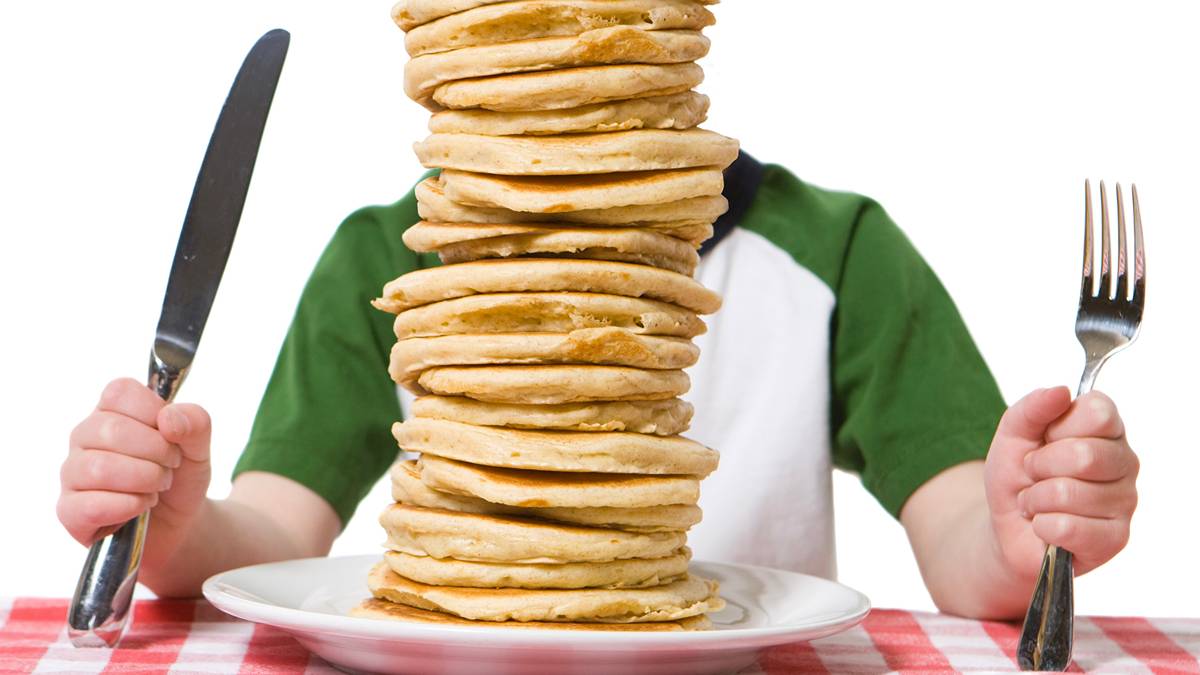How long should breakfast actually keep you full?

He wanted a "well balanced" breakfast and that's precisely what he got. Pic via Getty Images
Here’s what a dietitian wants you to know about how long breakfast should keep you full how to make your morning meal keep you satisfied for longer.
Words by Evie Dinkelmeyer for Body + Soul
Breakfast is supposed to be the most important meal of the day, yet it’s often neglected or skipped altogether. Here’s what a dietitian wants you to know about how long breakfast should keep you full – and how to make your morning meal keep you satisfied for longer.
“Eat breakfast like a king, lunch like a prince, and dinner like a pauper.” So the saying goes.
But the reality is, life is busy and sometimes it’s just easier to grab a quick bite on the run or skip breakfast altogether.
And even when we do find the time to eat a meal in the morning, we might still find ourselves raiding the snack drawer shortly after.
So, how long should breakfast keep you full? And if your stomach is still grumbling after, is the breakfast good enough?

A well-balanced breakfast should keep most people comfortably full for at least three hours – ideally closer to four – before hunger naturally returns, research on appetite regulation suggests.
High-protein, high-fibre breakfasts are especially effective at prolonging that window.
Even if you’ve had a full breakfast, it’s normal to get a bit peckish before lunch time.
“Snacking is totally fine and encouraged,” Noon says.
“We want you to be eating about every two to three hours. That consists of three main meals and two snacks in between.”
What does a balanced breakfast look like?
“With every main meal we have, we want a combination of some protein, carbohydrate and some healthy fats; and if we can sneak in any fruit or vegies, that’s a prime example of a balanced meal,” Noon says.
“If you’re getting brain fog, chances are you’re not getting enough carbohydrate into your diet; if there isn’t enough protein or healthy fats, you won’t get a feeling of fullness.”
Breakfast ideas that will keep you fuller, longer
Zucchini, sujuk and labneh omelette
How to make your breakfast more satisfying
So, we know that breakfast is important and we have to include different food components in the meal. But what breakfast meals actually tick those boxes?
“Have a savoury breakfast. That would be avocado and eggs on some wholegrain toast, or some egg muffins with chopped vegetables,”Noon suggests.
If you’re a breakfast cereal person, opt for a wholegrain variety and think about what you can add to bulk it out a bit.
“You could add some pumpkin seeds, or chop up a banana and put that on top,” Noon says.
For those people who don’t feel hungry in the morning, she adds, “smoothies are a great, simple way to get a balanced breakfast”.
“You could add a tablespoon of peanut butter or some Greek yoghurt to your banana and milk.”
The dietitian says frozen cauliflower is really good in a smoothie because you can’t taste it, and it “makes it nice and thick”.
“The same goes for black beans if you’re having a chocolate-flavoured smoothie,” she adds.
I’m still hungry after breakfast, what am I doing wrong?’
“It’s because your breakfast isn’t balanced, or you’re not eating enough,” Noon says.
“Chances are the meal is more carb-heavy and doesn’t have enough protein.”
White bread toast and sugary cereals, for example, are high glycemic index (GI) foods so when you eat them, Noon explains, you get a blood sugar spike followed by a crash, which leaves you feeling hungry.
And what if you’re in the habit of missing the first meal of the day?
“If you’ve not eaten breakfast for a long time, your body is not going to tell you that it needs the nutrition, so start small – just half a banana with your morning coffee or a few spoonfuls of yoghurt to start with.”
What happens if you skip breakfast?
If you’re undernourished and dragging yourself to lunch, you’re more likely to get a craving for something really sugary.
“That’s your body saying, ‘Hey, excuse me, I’m struggling over here’,” Noon explains.
“If you skip breakfast, you might experience lack of concentration, low energy levels, nausea and lightheadedness.
“You might also feel ‘hangry’ (hungry and angry), and not able to tolerate the people around you – that’s the body’s way of signalling that you’re low on fuel.”
This article first appeared in Body+Soul as How long should breakfast actually keep you full? We asked a dietitian
Related Topics

UNLOCK INSIGHTS
Discover the untold stories of emerging ASX stocks.
Daily news and expert analysis, it's free to subscribe.
By proceeding, you confirm you understand that we handle personal information in accordance with our Privacy Policy.








